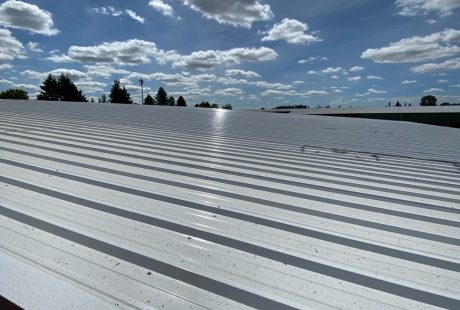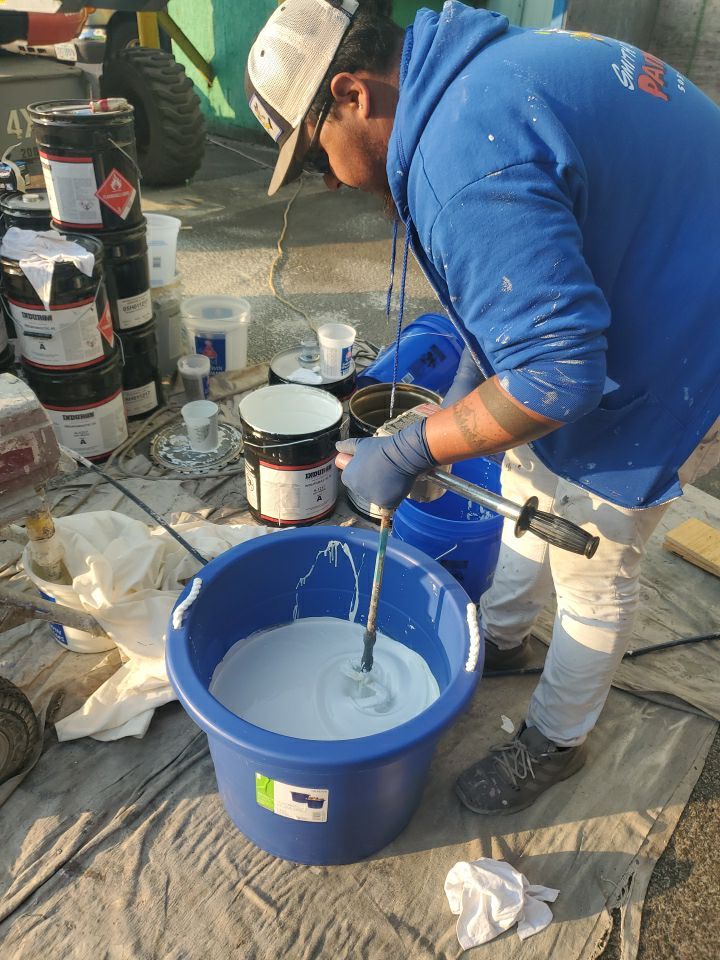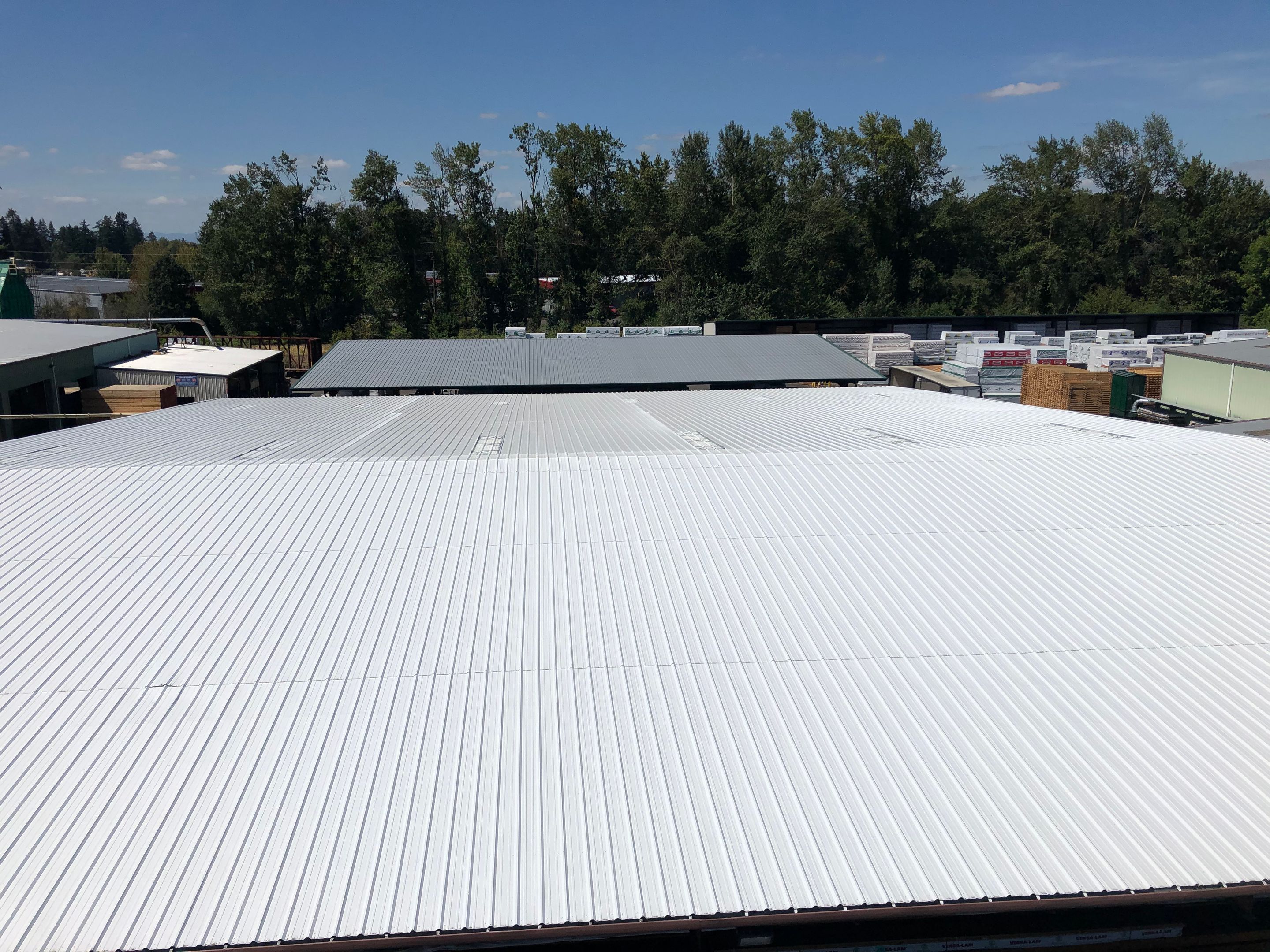By: Jamie Laird, Induron Sales Representative
 I have been selling paint in one way or another for the past 25 years. It’s always my greatest pleasure when I can provide a unique solution to a corrosion problem that is either difficult or not well understood. This was the case with a large galvanized metal roof in Woodburn, Oregon.
I have been selling paint in one way or another for the past 25 years. It’s always my greatest pleasure when I can provide a unique solution to a corrosion problem that is either difficult or not well understood. This was the case with a large galvanized metal roof in Woodburn, Oregon.
The Challenge
A large manufacturing facility about an hour south of Portland was experiencing a major issue: The Oregon Department of Environmental Quality identified the facility as a major contributor to zinc runoff in the storm sewer. As the facility did research on how to fix the issue, they quickly realized that the problem wasn’t clearly understood and that the current use of large diatomaceous filters was extremely costly and not very efficient. As a last ditch effort, they reached out to a local industrial contractor for advice.
Smith and Company Painting out of McMinnville, Oregon is a second-generation painting contractor that specializes in commercial and industrial projects. After an original site survey, the owner, Parker Smith, asked me to go onsite to gain an understanding of the problems and offer solutions for overcoming them.
The facility has approximately 200,000 square foot of galvanized roof panels that are in varying degrees of deterioration. It was clear to me after walking the roof that the zinc in the runoff water was coming from the weathering galvanized metal. Parker and I explained to the asset owner our conclusions and proposed a solution to address this issue.
The Solution
We decided that the optimal solution was to encapsulate the galvanized panels with an industrial coating system that would act as a barrier between the rain water and the zinc. We asked for one roof that was approx 25,000 square feet and appeared to be in the worst shape.
 I provided a detailed specification to Parker and the asset owner, which gave recommendations for preparation as well as the two-coat system I believed would be the most cost-efficient as well as provide the longest service life while encapsulating the zinc and getting the run off levels to zero.
I provided a detailed specification to Parker and the asset owner, which gave recommendations for preparation as well as the two-coat system I believed would be the most cost-efficient as well as provide the longest service life while encapsulating the zinc and getting the run off levels to zero.
I recommended a Non-Ferrous Brush-Off Blast per SSPC SP-16 with an angular profile of .75 to 1.5 mils. I specified the use of a non-metallic grit to ensure no galvanic corrosion from embedded steel grit, which would create a dissimilar metal issue. I asked for the contractor to wash the roof with a minimum of 2500 psi using potable water prior to the blast as well as afterwards to ensure a clean substrate.
Prior to coating, I performed an Iso 8502-3 tape test to ensure a clean substrate and checked the angular profile with Course Testex Impressor Tape.
Since the roof has a 3/12 pitch, the dwell time of the rain water was a concern. We tried to eliminate this by using an epoxy mastic as the first coat. The tenacious adhesion of amine cured epoxy mastics make sure that regardless of service life, the best possible adhesion would be given to this system.
Since there would be a need for extreme color and gloss retention, I specified a second coat of acrylic aliphatic polyurethane. This would offer years of color and gloss retention as well as a high gloss to aid in getting the rain water off the roof as quickly as possible. I specified the first coat with Induron Induramastic 85 Epoxy Mastic at 3-7 mils dft and the second coat with Induron Indurathane 6600 at 2-4 mils dft. We reduced the epoxy 10% to slow the dry and to help wet out the surface. We reduced the second coat 10% to slow the dry and to not get any solvent pop as the air temps were consistently above 75 degrees Fahrenheit.
The thicknesses were routinely checked with wet film thickness gauges, and ambient conditions were monitored with an Elcometer Dew meter. Particular care was given to ensure the relative humidity was always below 85 percent and that the surface temperature was consistently a minimum of 5 degrees Fahrenheit over dewpoint.
The Result
When the project was complete, I used an Elcometer type 2 dft gauge to check the final dft of the system per SSPC PA-2 to make sure that the thickness requirements were followed. I got consistent reading of between 6-10 mil dft. I also wanted to make sure that there was no zinc present after the coating. I used a solution of 2 percent copper sulfate as a pH indicator for the presence of available zinc. I tested an uncoated roof and the solution immediately turned dark purple. This is a positive result for zinc. I then tested the coated roof and the solution remained a light blue. This was interpreted as a positive result for no available zinc.
Parker and I are looking forward to completing the rest of the roofs onsite as well as bringing our unique solution to market throughout the state of Oregon for other asset owners that are experiencing the same issues with zinc run-off. Check out the video below from Smith and Company Painting for more information on the project!





